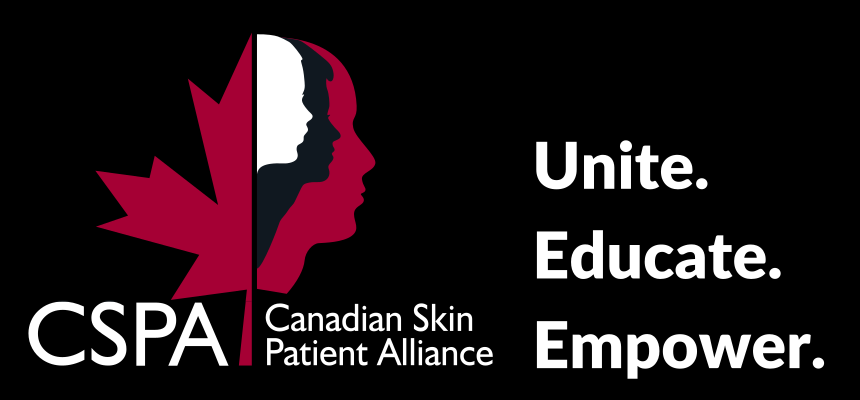Resources
If you are living with Cutaneous Lymphoma or know someone who is, you may want to stay up-to-date on the condition as well as current treatments and news.
Other Resources:
JAMA Article on Lymphomatoid Papulosis
If you are living with Cutaneous Lymphoma or know someone who is, you may want to stay up-to-date on the condition as well as current treatments and news.
JAMA Article on Lymphomatoid Papulosis
Dr. Marie-France Demierre, the Director of Skin Oncology at the Boston University School of Medicine, collaborated with the Cutaneous Lymphoma Foundation in 2005 to study the health-related quality of life for people with the condition. (To read more about this study, visit www.clfoundation.org/research/QOL_study.html.) Here is a summary of the findings:
However, 85 percent felt that their treatment made their disease more manageable.
There is no question that CTCL affects a person with the condition—but treatment can alleviate symptoms. Physicians and family members can help by acknowledging the emotional and social impact of this disease, as well as working to improve the person’s quality of life.
The Cutaneous Lymphoma Foundation is a good source of information and support.
CTCL-MF may be difficult to diagnose in its early stages, as the symptoms and skin biopsy findings are sometimes close to those of other skin conditions. For this reason, CTCL-MF is frequently misdiagnosed, and a person may have it for years before a definitive diagnosis is established. Your physician will examine your lymph nodes, take a skin biopsy, and can order various blood tests, including a test for Sézary cells. Other screening tests such as a chest x-ray or CT scan may be done, depending on your history. Both the clinical picture (based on your history and an examination) and the skin biopsy findings are essential for an accurate diagnosis.
Treatment of cutaneous lymphoma is specific to each person and depends on the symptoms and stage of the disease. Treatment can be directed at the skin, the entire body (systemic), or both. Become familiar with the different treatment options so you can discuss them with your doctor and find the best combination for you.
Skin treatments include:
Systemic treatments include:
To achieve the best long-term benefit, these treatments may be prescribed alone or in combination. Your doctor will choose the best form(s) of treatment for you. If you’re unsure of how a particular treatment works, ask your doctor for an explanation.
*All information on medical treatments on this site is provided as an overview only. For a complete and up-to-date list of side effects, warnings and precautions, read the product’s package insert and consult your doctor or a pharmacist.
**If you are considering an alternative or complementary therapy, discuss it with your doctor first, and always be sure to keep your doctor up to date about any vitamins, supplements, or other forms of alternative treatment you are taking. Like any medication, alternative therapies can interact with other medications/treatments and, in some cases, have side effects of their own. Remember that “natural” does not necessarily mean “safe.”
The information in this section has been gathered from existing peer-reviewed and other literature and has been reviewed by expert dermatologists on the CSPA Medical Advisory Board.
Cutaneous lymphoma is a general term for many lymphomas (cancers of the lymph nodes and lymph system) of the skin, including cutaneous T-cell lymphoma, mycosis fungoides, Sézary syndrome, cutaneous anaplastic large-cell lymphoma, adult T-cell leukemia/lymphoma, peripheral T-cell lymphoma, lymphomatoid granulomatosis, granulomatous slack skin disease, B-cell lymphoma, and pagetoid reticulosis, to name a few.
Cutaneous T-cell lymphoma (CTCL) is the most common of the skin lymphomas. Mycosis fungoides (MF) is the term for the most prevalent type of CTCL. It is a low-grade lymphoma that primarily affects the skin. Generally it has a slow course and often remains confined to the skin. Over time, there is a low risk (less than 10 per cent) of progression to the lymph nodes and internal organs.
Sézary syndrome (SS) is the leukemic variant of CTCL, meaning it is a cancer that affects the blood cells. Symptoms include widespread redness and scaling of the skin (erythroderma), often with severe itching. Lymph nodes become enlarged, and the malignant T-cells from the skin are also found circulating in the bloodstream.
Scientists are continuing to research cutaneous lymphomas, as no single cause has been found. There is no research indicating that it is hereditary. Studies have also failed to find a connection between chemical exposure, environment, pesticides, radiation, allergies or occupational environments. Exposure to Agent Orange may be a risk factor for developing CTCL-MF in Vietnam War veterans, but no direct cause-effect relationship has been established.
One of the challenges in accurately describing CTCL is that it doesn’t look the same for every person. However, patches, plaques and tumours are the clinical names for the different symptoms:
The course of CTCL-MF is unpredictable. Some people with the condition will progress slowly, others rapidly or not at all. Most people will only experience skin symptoms without serious complications. About 10 per cent will experience disease symptoms that progress, with lymph node and/or internal involvement with serious complications. Many people live normal lives while they treat their disease, and some are able to remain in remission for long periods of time.
Charitable Number: 80425 7814 RR 0001
